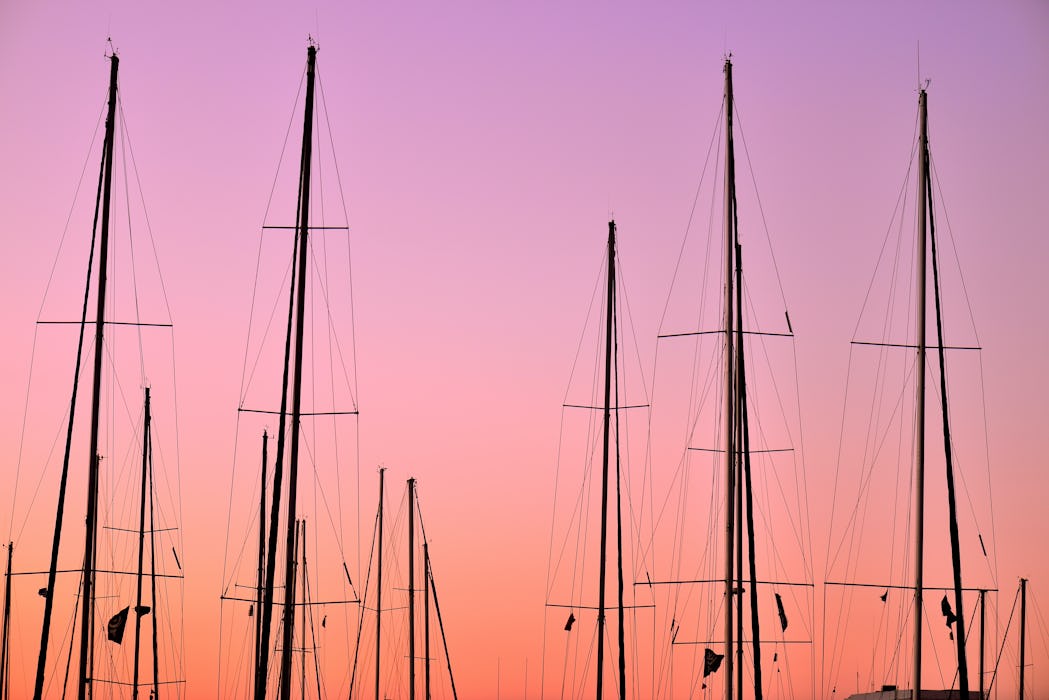

Glossary of sailing and nautical terms

COVID 19: You can change your booking on most of our boats if your travel plans are affected by coronavirus. See here for more details
Let us help you plan the perfect sailing trip
Provide your travel details, receive free offer and enjoy your holiday!
In order to become a true sailor, you’ll first need to learn some essential sailing terms. Luckily, we’ve got you covered! In this A-Z of yachting terms, we’ll briefly explain yacht terms, parts, equipment, sailing commands, and even some pirate jargon.
For you to understand the ins and outs of a boat you should know where it starts and where it ends. The front of a boat is known as the bow while the back is called the stern. Also, while the left of the boat is called the port side, the right is called starboard. Now that you’re familiar with the different sides of a boat, let's get down to real sailing business.
- ABANDON SHIP! – You have probably heard this in movies and you know it doesn't bring any good. You should leave the vessel immediately as it looks like your ship is in some imminent danger.
- ABOARD – When you’re aboard, you are on a boat. The opposite of ashore.
- ABOVE DECK – Above deck means you are standing on the deck, not above it.
- ABREAST – We call vessels that are side to side - abreast.
- ADRIFT – Don't panic but if your vessel is adrift it means it has sailed off without you. Okay, you can panic a little.
- AGROUND – If the water is not deep enough, then you go aground and your vessel’s bottom touches the ground.
- AHEAD – This means something is in front of the boat, for example your destination is ahead.
- AHOY – Another way to say hello, with a little pirate tone.
- ALL HANDS HOAY – Everyone should get on the deck.
- AMIDSHIPS – The middle of a vessel, whether from her length or width.
- ANCHOR – A chain with a hook on the end that falls to the bottom of the sea and prevents your yacht from sailing off without you. Used for parking your yacht in a bay.
- ANCHORAGE – A great spot for holding, anchoring and sheltering your vessel.
- APPARENT WIND – A mixture of the true wind direction and the wind created by the sails.
- ASHORE – Being on the shore, and not on your vessel.
- ASTERN – Opposite of ahead is astern, in other words behind.
- AYE, AYE – A reply to a command to show that it will be carried out.
- BAGGYWRINKLE – A soft covering for cables that prevents friction between sails.
- BAREBOAT – Sailing a yacht on your own without a crew or skipper.
- BATTEN DOWN – If you hear “Batten down the hatches!” make sure you secure any hatchets and loose objects so you don’t lose anything important.
- BEAM – The width of your vessel.
- BEARING – Bearing is the direction in which we are headed. The reference point can be a compass or the heading direction.
- BELOW – Instead of being “above deck,” you can also be “below” it.
- BERTHS (Sleeping) – The number of people able to sleep on a specified vessel.
- BERTHS (Mooring) – The location in a harbour or port for mooring a vessel
- BEAM REACH – Is the position of a sail when the true wind hits it at a 90 degree angle.
- BILGE – The deepest part of the vessel’s hull, where water can enter.
- BOAT HOOK – A pole with a hook on the end. You can use it to grab and pick up a rope, collect something that has fallen overboard, or push the vessel off the port.
- BOOM – This is the horizontal pole that runs along the bottom of the sail. A part that often hits unsuspecting victims on the head in small vessels. Not a very pleasant experience.
- BOW –The front of the vessel also known as the ”pointy end” of the boat.
- BOW LINE – A rope that’s tied onto the front of the vessel that stops the vessel from moving sideways when moored.
- BOWLINE – To confuse you, this is a completely different from the bow line. It’s pronounced “boh-lin” and it’s a knot which creates a loop at the end of a rope.
- BRIDGE – The part of the vessel from where you steer and control the speed.
- BRIGHTWORK – Brightwork is the shining woodwork or polished metal that you can see on a vessel.
- BUOY – A buoy is a floating device that marks a position, a hazard, or shallow sea. Some are also used to moor vessels.
- BROAD REACH - Sailing downwind with the wind is hitting the sails at an angle between 91 and 170 degrees.
- CABIN – Separated living units, like a bedroom.
- CAPSIZE – When a vessel leans too far causing it to flip over. This can result in the sinking of the ship.
- CAST OFF – When you cast off you let go of a rope from where your vessel has been moored up.
- CHAFING GEAR – It sounds quite uncomfortable, but it's not for you. “Chafing gear” is a tube or some type of fabric that you wrap around a rope to stop it from rubbing on a rough surface.
- CHART – A nautical map that gets you from point A to point B.
- CLEAT – A fitting on vessels used to tie or secure ropes.
- COCKPIT – An opening from where you can control the vessel.
- COIL – When it’s time to put away ropes, you make a neat, circular coil with them.
- COMPASS – A navigational instrument that revolutionised travel.
- COURSE – The route you follow across the water.
- CURRENT – The current is actually the movement of water, usually caused by tides or wind.
- DEAD AHEAD – Dead ahead means straight ahead.
- DEAD ASTERN – Meaning behind you. The complete opposite of dead ahead.
- DECK – Not the deck of playing cards. This is a surface that covers any part of a vessel on which you can walk on.
- DINGHY – A small inflatable boat attached to the yacht. It is sometimes easier to go with the dinghy.
- DOCK – A pier, float or a wharf where you can moor your vessel.
- DRAFT/DRAUGHT – It can mean two things, the depth of a vessel underwater or the fullness of a sail.
- DUNSEL – This part has no use on a ship. Don't be a dunsel!
- EASE – To let the sails out.
- FATHOM – In sailing, a fathom is a nautical unit of length. It matches six feet or approximately two metres.
- FENDER – The colourful cushions that hang over the edge of a vessel to prevent damage to the boat or pontoon.
- FLOOD – This doesn't have to be super dramatic, it can simply be used to describe an incoming tide.
- FORE-AND-AFT – A centre-line of a vessel that runs lengthwise, parallel to the part of the hull that goes deeper into the water below it.
- FOREPEAK – An open area in the front front of the vessel.
- FOULED – A fouled piece of equipment is blocked, tangled, or tarnished.
- GALLEY – A vessel’s kitchen. Go on, we know you’re hungry.
- GANGWAY – The gangway is where you can get in and out of the vessel.
- GEAR – When you hear “Get your gear!” it means ropes, lines, blocks, and other equipment on board.
- GENOA/JENNY – Might be quite confusing if your name is Jenny. A Genoa or Jenny is a sail that overlaps the mainsail.
- GRAB RAILS – When in danger of falling off the boat, it’s a good idea to hold onto the grab rails to prevent that.
- GROUND TACKLE – The bits that touch the ground such as the anchor and its gear.
- GUNWALE – The rail that goes around the edge of the deck.
- HALYARD – All the ropes used to pull sails up.
- HATCH – An opening in the vessel’s deck that has a water-resistant cover.
- HEADING – The direction the vessel is going in.
- HEADWAY – A headway vessel is going forward, while the sternway is moving backward.
- HEADS – The heads are actually the toilets, the loo, dunny… It can also be the upper corner of a triangular sail.
- HELM – If somebody asks you to take the helm, drop everything you are doing and take the wheel. The helm is the wheel or tiller that controls the vessel.
- HELMSPERSON – The best and the worst job on board. The person steering the wheel.
- HOLD – The inside of the yacht’s hull.
- HULL – The main body of a vessel, the part that floats.
- INBOARD – Simply inside the vessel’s edges.
- IN IRONS – When the boat is difficult to manoeuvre under sail.
- IRON MIKE – A slang for auto-pilot. Not a famous boxer.
- ITINERARY – The route of travel on your holiday. Usually planned in advance but needs to remain flexible to respond to weather conditions and personal preference
- JACOB’S LADDER – The type of rope ladder that you’d use to climb up something. It can be lowered from the deck when passengers come on board.
- JETTY – A jetty is a structure made to create breakwater, shelter, erosion control, or a channel.
- JIBING/GYBING – On a vessel, jibing means turning away from the wind until the wind comes from the other side.
- KEEL – The central structural base of the hull, the “backbone” of a vessel.
- KNOT – Not just a loop you tie in a rope or string, but also a unit of speed (equals one nautical mile an hour)
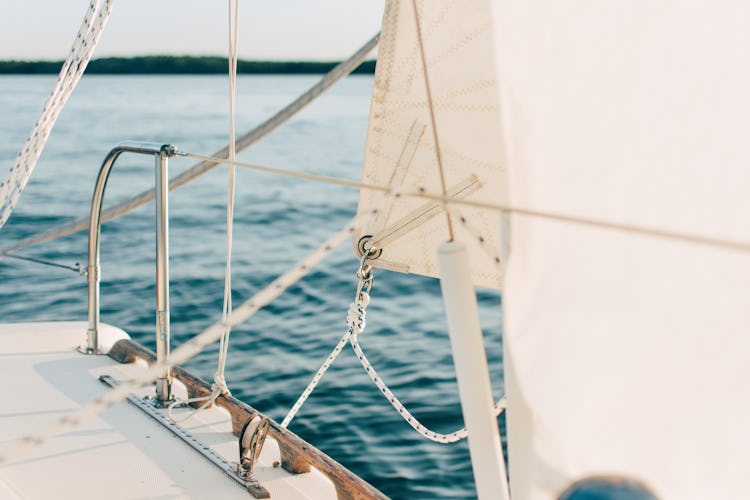
- LATITUDE – Geography knowledge can be used here. The latitude is the distance north or south of the equator. It’s measured in degrees and up to 90˚ north and 90˚ south. Each degree of latitude accounts for 60 nautical miles.
- LAZARETTE – A storage space at the back of the vessel.
- LAZYJACK – Wires leading from the mast (the big central metal pole) to the boom (pole that runs along the bottom of the front partl) that helps lowering the sails.
- LEE – The down-wind side of a vessel or shore which is sheltered.
- LEE CLOTHS – To avoid falling out of bed in the middle of the night, you can use a lee-cloth to keep you safe.
- LEEWARD – This is the direction away from the wind, as opposed to windward, which means into the wind.
- LOA – The maximum length of a yacht including overhanging ends that extend beyond the main bow and main stern.
- LOG – The log measures speed and records the vessel’s course.
- LONGITUDE – This is the distance east or west of the meridian line at Greenwich, UK, which is measured in degrees. There are 180˚ west and 180˚ east of Greenwich.
- LINE – This is a general term for a rope or line on a vessel that has a control function.
- LWL – Load waterline length or the length of a yacht that is in contact with the water.
- MAINSAIL – The main sail that sits behind the main mast on a yacht.
- MAST –The big metal pole that reaches from the bottom of the yacht to the sky. The sails hang from the mast.
- MED MOORING – The art of reverse parking a yacht into a small gap, a typical mooring technique in most Mediterranean harbours.
- MIDSHIP – The middle of the vessel.
- MONOHULL – A boat with one hull. The classic sailor’s yacht
- MOORING – When you moor a vessel, you tie it to a buoy or a pier. And then hope it won’t go adrift.
- NAUTICAL MILE – A measure of distance when on water. It’s around 6,076 feet, 1,852 metres, 2,025 yards, or one minute of latitude.
- NAVIGATION – Keeping to the route of a vessel when on a voyage from point A to point B. Basically, figuring out where you are and where you are going.
- OCEAN – Don’t think this one needs explaining, but anyhow a huge blue surface, pretty wet too.
- OPERATIONAL LANGUAGE – The language that the crew use to give instructions.
- OUTBOARD – When something is outboard, it’s beyond the vessel’s sides.
- OVERBOARD – It’s probably best to avoid this one. When someone or something is overboard, it’s over the side of the boat.
- PIER – A pier is a loading platform held by posts that extends out from the shore.
- PILOTAGE – Piloting when you navigate using visible features on land or water.
- PORT – The left side of the vessel is called the port side. It is also another name for a harbour.
- PROW –A poetical alternative term for bow.
- QUAY – A stone or metal platform lying alongside or above the water. Usually used for parking, loading and unloading vessels.
- REACHING – For most sailboats, this is the fastest way to travel. A close reach is toward the wind, and a broad reach is slightly away from the wind.
- REEFING – The preferred method of reducing sail area so it is easier to control. Especially useful in higher winds and bad weather conditions.
- REGATTA – A series of boat races.
- RIGGING – The ropes and wires that control the sails and support the masts.
- RIP RAP – A pile of rocks and rubble made to form a breakwater, often surrounding an off-shore lighthouse or vulnerable harbour.
- RUDDER – When you change directions on the vessel, it moves the rudder which in turn steers the vessel. It’s usually a vertical plate or a board connected to the back.
- SAILS – The most important part for sailing. An eco-friendly engine that converts wind power into boat speed.
- SALOON – The living area, you go here to relax.
- SATELLITE NAVIGATION – You have probably used regular navigation that uses radio transmissions before. However, the equipment on a vessel is a bit more complex and sophisticated.
- SCUPPERS – Scuppers are the holes in the deck that let the water drain off.
- SEA COCK – A sea cock is a faucet in the hull that can be turned off when not in use.
- SEAMANSHIP – All the skills of boat handling can be called seamanship. It could be maintenance, repairs, piloting, sail handling, marlinespike work, and rigging.
- SEA ROOM – It’s actually used to describe a safe distance from the shore or other hazards.
- SEAWORTHY – If a vessel can safely sail in rough weather, we call it seaworthy.
- SECURE – When something is secure, it is tied safely.
- SET – When the current is flowing toward a particular direction, it is set!
- SKIPPER – The most important person on your yacht, the person in charge and responsible for the safety of all aboard
- SLACK – Something that is not fastened.
- STERN – The rear of the yacht. Also can be the skipper’s voice tone if your yacht floats away.
- SOUNDING – This has nothing to do with sounds, it is actually a measurement of water depth.
- SPRING LINE – This is a rope that stops a boat from moving forward or backward while being fastened to a dock. Also used during docking and undocking.
- SQUALL – A squall is a sudden, violent wind that often brings rain. Get your bad weather gear ready!
- STAND-ON VESSEL – A “stand-on vessel” is a vessel that has right of way and should maintain its speed and direction. A give-way vessel should take steps to avoid a stand-on vessel
- STARBOARD – Starboard is the right side of a vessel when looking towards the front/bow
- STEM – The front of the vessel.
- STERN – The back of the vessel.
- STERN LINE – This is a rope leading from the stern (back) of the vessel.
- TACKING – Zig-zagging into wind so the wind passes from one side to another.
- TILLER – A tiller is a bar or handle that you use to turn a vessel’s rudder to change directions.
- TOPSIDES – This is the bit of the vessel that’s between the waterline and the deck.
- TRIM – No, not a haircut trim. This trim means making adjustments to sails to maximise their efficiency.
- TRADE WINDS – These winds blow from the north east in the Northern Hemisphere and the south east in the Southern Hemisphere. Sailors use them because they push vessels toward the equator.
- TRANSOM – The transom is a wall at the back of a vessel.
- TRUE WIND DIRECTION – The direction from where the wind is actually coming from.
- UNDERWAY – When you are on the sea, your vessel is underway. In other words, it’s not moored, at anchor, or aground.
- VESSEL – A craft for traveling on water, usually a larger boat or a ship.
- WATER – The liquid you can drink and float on.
- WATERLINE – A painted line on the vessel that shows where the vessel ends and the sea starts.
- WAY – The path that a vessel leaves after itself when it moves across the sea.
- WATCH – When you are on a watch on board you have to work with your fellow watch members.
- WINCH – A rotating, horizontal drum, powered either by electric motor or human motion
- WINDWARD –This means to go into the wind, and it’s tough to sail windward.
- YACHT – All kinds of vessels that are either powered or have sails

- Mail: [email protected]
- Call Us: +44 (0) 23 8045 8737
How to sail: A-Z of Yachting Terms
When learning how to sail have you ever wondered when you are on a yacht what some of those yachting terms mean, we have asked our RYA Training Centre pupils which ones confuse the most. Here are a selection, which includes the obvious to the more obscure!
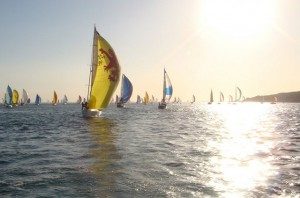
A baft: A location on the boat but further to the rear of the boat. “The tiller is abaft the mast.”
A beam: The beam is the widest part of the boat. When another boat is abeam, it is at a right angle off the beam to either the starboard or port side of the boat you are on.
A ft: When on a boat you refer to the stern part of the boat as being aft or to the rear of the boat.
A head: A term used to describe the area in front of the boat you are on. “Look ahead.”
A ids to Navigation: This includes all external systems like channel markers, preferred route buoys, danger and safe water buoys, isolated danger and regulatory markers etc. that help determine a boats position or course, the presence of dangers or obstructions and the preferred route to navigate.
A midships: In the middle of the boat between the stern and the bow.
A pparent Wind: The apparent wind is a combination of the true wind and the wind caused by the boat travelling through the water. On an windex, the apparent wind will cause the windex to show wind direction just in front of the true wind.
A stern: A location off the boat and behind it.
B ulkhead – Refers to an often watertight, interior wall on the boat
Backing Wind: Refers to the wind shifting direction in a counter-clockwise direction. This usually means that bad weather is approaching.
Backstay: A wire running from the top of the mast to the stern of the boat. The backstay stops the mast from falling forward and also helps to control the degree of mast bend when tuning a boat.
Battens: Wood, fiberglass or plastic strips slid into pockets along the leech of the sail. Battens help to shape and strengthen the sail to increase overall performance.
Beam: The widest part of the boat.
Beam Reaching: One of the points of sail. You are ‘beam reaching’ when sailing directly sideways to the wind on either a port or starboard tack. Think of a clock face – if the wind is blowing from 12 o’clock, sailing at between 3 o’clock or 9 o’clock would be a beam reach.
Bearing Away: Turning away from the wind or turning downwind.
Beating: Sailing towards the wind by tacking back and forth across the wind.
Belayed: Secured, tied to, made fast to.
Bend On: To secure one thing to another. Tieing two lines together.
Bifurcation: A channel junction (two channels meeting) usually marked by a ‘bifurcation buoy’ indicating the perferred channel to follow.
Bight: A loop or bend in a line.
Bilge: The lowest inner part of a boats hull.
Bitter End: The utmost free end of a line. (The other end is referred to as the ‘Standing Line’).
Boat Wind: The wind created by the boat moving through the water. The true wind and the boat wind combine to create the apparent wind direction.
Boat Fall: Rigging used to raise or lower a ship’s boat.
Boat Painter: Rope tied to the front end of a boat used to either tow a boat or to secure it to a dock.
Bollard: Wooden or iron post on a pier to which the boat is secured.
Boom: The boom is the pole running aft from the mast to which (among other things) the foot of the mainsail is attached.
Bowline: A very strong and yet easy to untie knot that creates a loop in the end of a line.
Breastlines: Mooring lines that run from the bow and the stern at right angles to the dock to stop the boat from drifting out from the dock.
Broad Reach: One of the points of sail. Sailing downwind off to the port or starboard side. Think of a clock face – if the wind is blowing from 12 o’clock, sailing at between 4-5 o’clock or between 7-8 o’clock would be a broad reach.
By the Lee: Sailing downwind with the mainsail remaining on the same side of the boat that the wind is hitting. If you are sailing downwind on a port tack, typically the mainsail would be off the starboard side of the boat. When sailing ‘by the lee’, the mainsail in the same situation would remain on the port side of the boat out at a 90 degree angle to the boat.
C lew – The lower aft corner of a sail
Cabin: The below deck living quarters.
Cable: Measurement of distance equal to 0.1 nautical mile.
Cam cleat: A fitting through which a line is run through. The cam cleat consists of two cams that wedge against the line stopping it from being pulled out.
Cardinal Aids to Navigation: Buoys with indicate the location of hazards, safe water or deep water by reference to the four cardinal points of a compass (North, South, East, West).(See our section on buoys for a more complete explanation.)
Catboat: A boat with one mast flying no foresail (jib).
Cast Off: To release the lines allowing the boat to leave it’s mooring.
Chainplates: Very strong metal plates affixed to the hull to which the forestay, backstay and shrouds are attached.
Chart Datum: For navigational safety, depths on a chart are shown from a low-water surface or a low-water datum called chart datum. Chart datum is selected so that the water level will seldom fall below it and only rarely will there be less depth available than what is portrayed on the chart
Chock: a metal fitting, either oval or U-shaped, through which mooring lines are passed. Chocks help reduce abrasion saving the lines from excessive wear and tear.
Cleat: A small, metal deck fitting with horns used for securing lines (belaying).
Clew: The lower rear corner of a sail.
Close Reach: Point of sail – sailing against the wind at an angle somewhere between a Beam Reach and Close Hauled. Think of a clock face – if the wind is blowing from 12 o’clock, sailing at 2 o’clock or 10 o’clock would be a close reach.
Close Hauled: Point of sail – sailng as close to the wind (sharp angle to the wind) as possible without the sailings luffing (fluttering).
Cockpit: The open inset area from where the boat is steered.
Companionway: Stairs or ladder on a boat usually leading down to the cabin.
Cringles: Open metal rings inserted into the sail (also called grommets) used as reefing points for a sail but also found at the clew, head and tack of the sail to attach halyards, lines, outhauls etc.
Cunningham: A line used to adjust the forward edge of the mainsail. Usually runs from the tack of the sail to the front area of the boom.
Current: The horizontal flow of water. (Tide is the vertical flow of water.)
Cutter: A cutter has one mast but sails with two foresails.
D raft – This describes the depth of a boat measured from the deepest point to the waterline
Davit: A crane onboard that can be swung out over the side for hoisting or lowering boats.
Dead Reckoning: Navigational term – method used to plot the course already travelled by measuring speed and time to calculate distance.
Deep Six: A slang term meaning to discard something over the side of the boat.
Degree: A distance of measurement on a nautical chart. One degree equals 60 nautical miles. Each degree is broken down into 60 minute intervals. One minute of one degree equals 1 nautical mile.
Deviation: A ship’s magnetic compass reading can be affected by metal objects on the boat (electronic equipment etc). The difference between the correct magnetic reading and the ships compass magnetic reading is called deviation. Deviation will vary depending on the direction of the boat.
Dog: A metal fitting used to secure watertight doors, hatch covers and scuttles.
Downhaul: A line attached to the tack of the sail and used to pull down or tighten the mainsail to increase sale efficiency.
E ase: To let out or ‘ease off’ a line.
E nsign – The national flag of the boats home country
F Fairleads: A metal fitting through which lines are run to in order to change the direction of the lines while reducing friction on the lines.
Fairway: Sailing on inland waters, fairway means an open channel or being in midchannel.
Fast: To make fast. To secure (snugly tie) a line to something.
Fathoms: A unit of measurement. One fathon equals 6 feet.
Fenders: Cylindrical air filled plastic or rubber bumpers hung off the side of a boat or dock to prevent damage to both dock and boat.
Fetch: The distance over open water the wind has blown.
Faked: A line is faked by zig zagging it back and forth so that when it is used it will not tangle on itself.
Flaked:A sail is flaked when lowered. Flaking a sail is the process of folding the sail back and forth upon itself like the blades on a paper fan. Flaking a sail will help prolong the sail life.
Foot (Sail): The foot of a sail is the lower part of the sail. In the case of a mainsail, this is the part of the sail that runs along the boom.
F orepeak- The cabin most forward in the bow of the boat
Forestay: The forestay is a wire that runs from the top of the mast (or near the top of the mast) to the bow of the boat. The forestay supports the mast from falling backwards and is also used in shaping the bend in the mast for maximum efficiency. The luff (front) of the foresails (jib, genoa) are also generally attached to the forestay depending on the rigging system.
Forward: When on a boat, forward means towards the bow. “Move forward” – move towards the front of the boat.
Galley: The boat’s kitchen.
Genoa: The Genoa is a foresail that is larger than a jib. The clew (lower corner at the foot of the sail) extends aft of the mast unlike a jib.
Give-way Boat: Navigational rules – the boat not having the right-of-way. The Give-way boat must stay clear of the Stand-on boat. The Give-way boat must make it’s intentions known by making a decisive maneuver to alert the Stand-on boat.
Gooseneck: This is a metal fitting that attaches the boom to the mast.
G oosewinging – To sail downwind with the mainsail set on one side and the foresail on the other
Gybing: Sailing down wind and turning through the wind causing the sails to move from one side of the boat to the other.
Gybe ho: Term used by the helmsman to let his crew know that he has started to turn the boat into a gybe.
H alyard – A line which is used to raise things on a boat, so the main halyard line would be used to raise the mainsail
Halyards: Lines used to lower and raise sails.
Hanks: Clips found along the luff (front) of the foresail used to clip the sail onto the forestay (wire running from the bow to the top or near the top of the mast).
Hard over: Turning the wheel or pushing the tiller all the way over.
Head: Generally used to refer to the boat’s toilet. When talking about a sail, the Head is the top of the sail.
Head to Wind: The bow of the boat is pointed directly into the wind.
Heading up: Turning up more into the wind.
Heaving to: A way to, in effect, stall a sailboat by backing the jib, easing out the mainsail and turning the rudder hard into the wind. The forward wind pressure on the foresail wants to force the bow downwind. The rudder turned towards the wind wants to force the bow windward. These two counter effects balance each other causing the boat to hold it’s position with little movement. The mainsail is eased out all the way so that it does not catch any wind and therefore has no bearing on the boats postion.
Heeling: Leaning or heeling over caused by wind pressure on the sails.
Helm: The Helm is the steering mechanism of the boat (wheel or tiller). The person at the helm is called the helmsman.
Helms Alee: A term used by the helmsman to notify the crew that he has started to tack. Hypothermia: A dangerous condition where the body core temperature has been lowered causing extreme shivering, loss of co-ordination, in ability to make decisions and in extreme cases, loss of conciousness and even death.
I nlet – A recess, such as a cove or bay, along a coastline
In Irons: This occurs where the boat has been turned directly into the wind and has lost all forward momentum. Without forward momentum the boat loses it’s ability to steer.
J ackstay – A strong line, that can be made of wire, which runs fore and aft alongside the boat that can be used to attach your safety harness to.
Jacob’s ladder: A light ladder made of rope or chain with metal or wooden rungs used over the side or aloft.
Jib: The jib is a foresail (smaller than a genoa). The jib is about the same size as the triangular area between the forestay, mast and foredeck.
Jiffy reefing: This is a way to make the mainsail smaller by partially lowering it, tying or reefing the lower slack part of the sail onto the boom through gromets (holes in the sail) called reefing points. This is done in high wind conditions to power down the sail.
Jury rig: Makeshift – adapting parts and materials for a use not specifically designed for in order to get by until proper parts or repairs can be obtained.
K etch – A sailboat with 2 masts
Kedging: A method used to free a grounded boat by dropping it’s anchor in deeper water and then pulling on the anchor rode to attempt to free the boat.
Keel: The large heavily weighted fin like structure secured to the bottom of the boat. The keel helps to keep the boat upright and also reduces leeway (side slipping across the wind).
Ketch: A two masted boat. The second and smaller mast (mizzen) is positioned just forward of the rudder post.
Knot: Rate of speed. On land it is miles per hour, on the water it is knots (nautical miles) per hours. One knot equals 1.15 land miles – so one knot is just a bit faster than one mph.
L eeway – The sideways movement of a boat caused by wind and currents
Lateral Aids to Navigation: channel buoys (Red & Green), isolated danger buoys (Black & Red), safe water ahead (Red & White), regulatory buoys (Yellow), bifurcation buoys (Black & Yellow) plus channel identification markers and navigation markers are all considered Laterial Aids to Navigation.
Lazarette: A storage compartment, usually under the seats of the cockpit.
Lee Helm: Also called Weather Helm, this is the tendancy of the boat to turn into the wind once it has heeled over at a sharp angle.
Lee Shore: Feared by most sailors, this is the downwind shore from the boat.
Leech: The rear edge of the foresail or the mainsail running from the head (top) to the clew (rear corner) of the sail.
Leeward: Downwind.
Leeway: When a boat sails across the wind, the force of the wind causes the boat to slip sideways. This drifting or sideway motion is known as Leeway.
Lifelines: The lines running around the outside of the deck creating a railing. The lines are attached to stanchions (upright metal posts).
Luff: The forward edge of a sail running from head to tack (front corner of the sail).
Luffing: A sail is luffing when it starts to flutter in the wind. The term Luff is also used to describe the same situation. “The sail is starting to luff.”
Luff Up: To turn into the wind to cause the sails to start luffing.
M ultihull – Any boat that has more than one hull, such as a catamaran.
Made fast: Secured to.
Mast: The upright pole supported by the shrouds, forestay and backstay to which the sails are attached.
Masthead fly: A windvane attached to the top of the mast to show which direction was wind is coming from.
Monkey fist: A type of knot, heavy in nature and tied to the end of the rope. The weighted knot makes it easier to throw the rope a farther distance.
Mooring ball: An anchored ball to which you can secure your boat. Safer alternative to anchoring provided the mooring ball and lines are in good condition.
Mooring lines: Lines used to secure a boat to a dock or mooring ball.
MSD: Marine sanitation device (toilet).
N eap tide – When during the four week tidal cycle, the tide rises and drops the least.
Nautical mile (NM): International standard for measuring distance on water. One nautical mile equals one minute of latitude. (One nautical mile equals 1.15 land miles.)
O uthaul – This is a line used to tension the foot of the sail, to better control the curvature of the sail
P ulpit – A sturdy rail around the deck on the bow, normally surrounding the forestay
Pad eye: A metal eye (ring) through which lines can be passed in order to stop chaffing.
Painter: The bow line of a dinghy.
P-effect (Prop Walk): When a boat is in a standstill position and put into forward or reverse, the resistance of the boat to move and the motion of the propeller creates a paddlewheel effect pulling the stern of the boat to either port or starboard side depending on the spin of the propeller. This paddlewheel effect is known as P-effect or Prop Walk. P-effect is especially noticable in reverse where there is greater boat resistance to move backwards thus making it easier for the prop to pull the boat sideways.
PFD: Personal Floatation Device – life jacket.
Pintle and gudgeon: The pintle and the gudgeon together form a swinging hinge usually associated with the installation of the rudder on smaller tiller steered boats. The pintle has pins that fit into the holes on the gudgeon thus creating a hinge like fitting.
Points of sail: A reference for the direction the boat is travelling in relation to the wind. (in irons, close hauled, close reach, beam reach, broad reach, running)
Port: When on a boat and facing forward, the left hand side of the boat.
Port tack: Sailing across the wind so that the wind hits the port (left) side of the boat first.
Pulpit: Located at the bow of the boat, this area is enclosed by a metal railing.
Pushpit: Located at the stern of the boat and like the pulpit, this area is enclosed by a metal railing.
Q uadrant – This is a device connected to the rudder that the steering cables attach to
R egatta – Boat races
S hroud – The wires at the side that hold the mast up
Schooner: A sailboat that has two masts both the same height or on some schooners, the aft mast is higher than the fore mast.
Scope: Expressed in terms of a ratio, it is the length of the anchor rode let out compared to height above the sea bed. Height is measured not from the water line but from the top of the deck to the sea bed. A safe anchoring ratio is 1:7 which translates to 7 feet of anchor rode for every foot of height. Many sailors incorrectly assume that height means water depth and therefore find themselves dragging the anchor for lack of proper scope.
Seaworthy: A boat that is fit to be sailed at sea.
Self-bailing cockpit: A cockpit that allows water to drain automatically from the cockpit to the outside of the boat.
Shackles: Metal fittings (often U shaped) that open and close with a pin across the top of the ‘U’. Lines and halyards often use shackles. The mainsail halyard is secured to the head of the mainsail with the use of a shackle.
Sheave: A roller/wheel to guide a line or wire.
Sheets: Lines that are used to adjust sails by either pulling them in or by letting them out.
Shrouds: Also called sidestays, shrouds are the metal wires found on both sides of the mast running from the deck to the top or near top of the mast. The shrouds support the mast by providing lateral support.
Slack water: The period between the flood (tidal water moving in) and the ebb (tidal water moving out) where the water has in effect stalled – little or no movement.
Slides: The groove in the mast to which the luff (front side) of the mainsail is inserted. The slides hold the sail tight against the mast and allows the sail to be easily raised or lowered.
Sloop: a sailboat that has one mast and sails with the mainsail and one foresail.
Soundings: Water depths.
Spar: A spar can refer to any of the following: mast, boom or a pole.
Spinnaker: A large balloon-like foresail used for sailing downwind (running or broad reach).
Spinnaker pole: The spinnaker pole is boom-like in nature, but smaller and lighter, and attaches to fore part of the mast a few feet up from the deck. The other end of the spinnaker pole attaches to the leeward (down wind) base of the spinnaker.
Spreaders: Bars extending sideways from the mast (gives the mast a cross-like appearance). The spreaders hold out the shrouds so that they do not interfer with the rigging.
Springlines: Springlines are used to secure a boat to a dock and stop the boat from moving forward or backwards. The aft springline runs from a point on the boat near the bow to a point aft on the dock. The forward springline runs from a point on the boat near the stern to a point forward on the dock.
Squall: A sudden isolated storm associated with potentially high wind gusts.
Stanchions: Upright metal posts running around the outside of the deck supporting the lifelines.
Stand: This refers to the short period of time where the tide is neither rising or falling. (At a stand still.)
Standing rigging: Standing rigging includes the forestay, backstay and the shrouds. Unlike the ‘running rigging’, the standing rigging is generally only adjusted when the boat is not underway.
Stand-on boat: The boat that must retain her current course and rate of speed in order to avoid a potential collision with an approaching give-way boat.
Starboard: As you face towards the bow on a boat, starboard is the right hand side of the boat.
Starboard tack: Sailing across the wind with the wind hitting the starboard (right) side of the boat first.
Steerage: The ability of the boat to be steered. In order for a rudder to be effective in steering a boat, there must be boat movement. A boat not moving cannot be steered.
Stern: The most aft part of a boat (the very back of the boat).
Storm jib: Same as a jib but not as big. The smaller sail is used in high wind conditions.
T ender – A small boat or dinghy used to ferry crew between the boat and shore
Tack: The front lower corner of a sail. Also means to sail back and forth across the wind in either a port or starboard tack.
Tacking: Also called “Coming About”. Tacking is when the bow of the boat is turned through the wind onto the opposite tack.
Tail: The bitter end of a sheet tailing out from a winch.
Tang: A metal fitting used to affix the stays to the mast.
Telltails: (Also called Ticklers) These are small strings (wool, plastic) attached to both sides of the luff of the sail. When the telltails on both sides of the sail are blowing straight back, this indicates that the sail has been properly trimmed.
Through hulls: Through hulls are holes that go through the boat. Each through hull will have a shuttle cock (value) to stop the flow of water. An example of a through hull would be the head (bathroom). A through hull value is opened so that water from outside the boat can be pumped into the MSD (toilet). The value is closed and the toilet pumped empty into a holding tank.
Tide: The vertical rise and fall the oceans.
Tide rips: This is an area of rough water where the wind is blowing across the water in the opposite direction from which strong tidal current is flowing.
Tiller: In boats that are not steered by a wheel, a tiller (long handle) is attached to the top of the rudder in order to facilitate steering.
Toe rail: A small metal railing running around the outside of the deck used to support your feet.
Topping lift: A line running from the top of the mast to the end of the boom. The topping lift supports the boom when the sail has been lowered.
Topside: The portion of the hull above the water line.
Transom: The flat area across the stern of the boat.
Trim: To trim or adjust the sail to make it more effective against the wind.
True wind: The actual wind felt wind the boat is not moving.
Turnbuckles: Adjustable fittings usually attached at the end of shrouds and stays. Turning the turnbuckle one way or the other tightens or loosens the wire.
U nfurl – To unroll a sail
Upstream: Moving from seaward into harbor, moving with the flood of the tide, moving up river toward the headwaters.
V ane – A wind direction indicator
Veering: A wind shift in the clockwise direction usually indicating that good weather is approaching.
W inch – A mechanical device for pulling in a line
Wake: The waves created behind a boat as a result of the boat moving through the water.
Way: Movement of the boat.
Weather helm: The tendancy of the boat to turn up wind after heeling (leaning over).
Wheel: Controls the rudder. Taking control of the wheel is taking the helm.
Winch: Provides a mechanical advantage. Used to raise the sails, tighten the sheets and other lines.
Windward: Towards the wind.
Wing to wing: Running (sail directly downwind) with the mainsail out one side of the boat and the foresail out the other side of the boat.
X marks the spot on the treasure map!
Y awing – The side to side movement of a boat on an uneven course
Yawl: A sailboat that has two masts. The aft mast (mizzen) is shorter than the foremast. The mizzen mast is located aft the rudder post. (On a Ketch, the mizzen mast is located fore of the rudder post – this is the distinquishing factor between the two.)
Z ephyr – A very light westerly wind
Universal Yachting Ltd
- Contact us | UK Dufour Dealer
- Solent Yacht Charter Terms & Conditions
- Privacy Policy
- DATA REQUEST
- Dufour Yachts
- Boats For Sale
- Yacht Charter

Universal Yachting Ltd: Mercury Yacht Harbour, Satchell Lane, Hamble, Southampton, Hampshire SO31 4HQ
Call Us: +44 (0) 2380 458737 Mail: [email protected]

Do you speak yachtie? A-Z glossary of Yachting terms
Updated: Apr 24, 2023

Superyacht industry has its own unique set of terminologies, that may seem confusing to someone who is new to superyachting. While some of the terms used is borrowed from the boating industry, others are unique to the superyacht world. In this article, we will explore the most common terms used in the superyacht industry, and help newcomers understand the language of yachties.
Aft – The back of the yacht. It is also known as the stern, and it’s where the yacht’s engines and steering mechanisms are located.
AIS - AIS, or Automatic Identification System, is used to track other vessels and communicate with them. This is important for safety and navigation.
Anchor - A heavy weight that is dropped from the yacht to hold it in place.
Abeam - At a right angle to the center of a vessel’s length
APA - APA or Advanced Provisioning Allowance is an additional charter fee paid in advance to cover the cost of provisions such as fuel, food and drink, and marina fees. The APA is usually 30% of the charter fee.
Bow – The front of the yacht. This is the direction the yacht moves towards.
Beam - The beam of a yacht refers to its width, measured at its widest point. This is an important measurement, as it can impact a yacht's stability and performance.
Berth - A designated space in a marina or on a yacht where a yacht can be docked or anchored.
Bridge - The area of the yacht where the captain navigates and controls the yacht.
Bilge - The deepest part of the vessel’s hull often used for storage
Crew – The team of people who work on a yacht. This includes the captain, first mate, deckhands, steward(ess), chef, and engineers.
Captain - The captain is the person in charge of the yacht and its crew. They are responsible for the safety of the yacht and its passengers, as well as navigating the vessel.
Capstan - A winch used to wind in an anchor and tighten lines
Draft – The distance from the waterline to the bottom of the yacht’s hull. This measurement is important for determining the depth of water needed to navigate safely.
Displacement - The weight of the yacht when fully loaded.
Deckhand - A crew member responsible for maintaining the exterior of the yacht.
EPIRB – Emergency Position Indicating Radio Beacon. This device is used to send a distress signal in case of an emergency.
ENG1 - MCA-approved medical certificate required for all crew on commercial superyachts.
ENGINEER - The engineer or chief engineer ensures the safe and efficient operation of the main propulsion and all auxiliary systems on board, including deck machinery, tenders and toys, and all hotel services. He/She is the one that keeps toilet flushing, AC working and the galley power on as some would also say 😊
Fender – A cushion or bumper that is placed between the yacht and the dock or another vessel to prevent damage.
First Mate - The second in command after the captain.
Flybridge - An open deck on the top of the yacht.
Foredeck - The forward part of the deck of a ship, usually level with the main deck
GPS – Global Positioning System. This is used for navigation and to pinpoint the yacht’s location.
Galley - The galley is the kitchen on a yacht. Depending on the size of the yacht, it may be a small space with limited amenities or a fully equipped professional kitchen.
Gunwhale - The upper edge of a yacht’s sides
Gross Tonnage - This is a measurement of the volume of the yacht’s enclosed spaces.
Hull – The body of the yacht that floats on the water. The hull design affects the yacht’s performance and efficiency.
Head - The head is the bathroom on a yacht. Depending on the size of the yacht, there may be multiple heads for guests and crew.
Interior – The living quarters of the yacht. This includes cabins, the galley, and the salon.
IMO - IMO stands for International Maritime Organisation and is the United Nations agency responsible for the safety and security of shipping
Jib - on sailing yachts, it is the foresail
Jacuzzi – well... Do we need to say what it is? 😊 A hot tub on a yacht. It’s a luxurious addition to any yacht and can provide a relaxing soak after a day of activities.
Knot – A unit of speed used in navigation. One knot is equal to one nautical mile per hour.
Keel - On sailing vessels, a structural framework that runs longitudinally along the centreline of a hull to increase stability
LOA – Length Overall. This is the length of the yacht from the tip of the bow to the end of the stern. It is a common way to measure the size of the yacht.
Leeward - The side sheltered from the wind
Mooring – The process of securing the yacht to a dock or anchor. It’s important to moor the yacht properly to prevent damage and ensure safety.
Mile - Nautical Mile (to be more precise) is a unit used in measuring distances at sea, equal to 1,852 meters
Navigation – The process of determining the yacht’s position and direction. This includes using GPS, charts, and other navigation tools.
Net Tonnage - Net tonnage is a measurement of a yacht's cargo carrying capacity. This measurement takes into account the yacht's volume and the amount of cargo it can carry.
Owner – The person or entity that owns the yacht. The one you need to satisfy (almost) anytime for (almost) anything! They may hire a crew to operate the yacht or use a management company.
Overhead - The overhead on a yacht refers to the ceiling or roof of a cabin or room. This can be important for crew to know when moving around the yacht
Port – The left side of the yacht when facing the bow. It’s important to know port and starboard when navigating a yacht.
Quarter - The quarter of a yacht refers to the aft part of the vessel. This can be an important area for crew to work in when mooring or maneuvering the yacht.
Quality – The level of excellence and attention to detail that goes into building and maintaining a yacht. High-quality materials and craftsmanship are essential for a safe and comfortable yacht.
Radar – A device used to detect other vessels or objects in the water. This is important for avoiding collisions and navigating in poor visibility.
Rudder - An underwater blade used for steering
Steward(ess) – A crew member responsible for maintaining the interior of the yacht and attending to the guests. This includes cleaning, cooking, and serving meals.
Superstructure - The part of the yacht above the hull, including the decks and cabins.
Salon - The living room on a yacht.
Starboard - the right side of the yacht (when facing the bow).
Stern - The rear end of a yacht.
Tender – A smaller boat used to transport guests or supplies to and from the yacht. It’s important to have a reliable tender for accessing remote areas and exploring.
Trimming - Adjusting the angle of the sails on a sailing yacht
Underway – The state of the yacht when it’s moving. This is different from being at anchor or docked.
Varnish – A protective coating used on the yacht’s woodwork. Varnish needs to be regularly maintained to keep the yacht looking beautiful.
Windlass – A device used to raise and lower the anchor. This is important for anchoring the yacht securely and safely.
Warp - A line used for anchoring or mooring
X-ray – A medical test that crew members may need to undergo to ensure they are healthy and fit to work on a yacht. Crew members need to be in good physical condition to handle the demands of the job, especially when they stay a long time at sea.
Yachtie – A term used to refer to someone who works on a yacht. This includes crew members such as the captain, first mate, deckhands, steward(ess), chef, and engineers. Being a yachtie is not just a job, but a lifestyle that requires a unique set of skills and knowledge. One of the most important aspects of being a successful yachtie is being able to communicate effectively with your crew members and guests. Superyacht terminology can be complex and daunting for newcomers, but with some guidance and practice, anyone can learn to speak yachtie.
Zulu Time – A standardized time used in navigation and communication on yachts. It’s also known as Greenwich Mean Time (GMT) or Coordinated Universal Time (UTC). This ensures that everyone on the yacht is on the same schedule, regardless of their location.
You want more?
If you want to go further and master all technical words, have a look at the most complete report on maintenance systems used onboard yachts across the world.
To go quick, have a look at this video and discover the BoatOn Book 😊
You have other words you want to add to this article or want some explanation about? Write to us at [email protected] !
Related Posts
Logbook for Boats: How to comply with legal requirements?
How to develop fleet management software for boats with professionals ?
How will the CSRD apply to maritime industry companies ?
Commentaires
Autopsy Suggests Tycoon Mike Lynch Likely Died of Suffocation in Yacht - Source

FILE PHOTO: Rescue personnel operate in search for the missing, including British entrepreneur Mike Lynch, in the area where a luxury yacht sank off the coast of Porticello, near the Sicilian city of Palermo, Italy, August 21, 2024. REUTERS/Guglielmo Mangiapane/File Photo
PALERMO, Italy (Reuters) - British tech tycoon Mike Lynch died of suffocation after running out of oxygen, an investigative source said, citing initial examinations carried out on Saturday after his body was recovered from the family yacht that sank off Sicily's coast last month.
Lynch, his daughter Hannah, 18, an onboard cook and four guests died when the British-flagged superyacht Bayesian sank during a severe and sudden weather event off the port of Porticello, near Palermo, on Aug. 19.
Initial results on Hannah Lynch's body, whose examinations were carried out on Saturday, were inconclusive, the source told Reuters, only ruling out any traumas or wounds as the cause of death and leaving open the possibilities she either ran out of oxygen or drowned.
The bodies of the dead, except for the cook, were found in cabins on the left-hand side of the 56-metre (184-feet) vessel, where the trapped passengers may have tried to search for remaining bubbles of air, the head of Palermo's Fire Brigade said last month.
Preliminary results from autopsies on four other victims - Morgan Stanley International Chairman Jonathan Bloomer, his wife Judith, lawyer Chris Morvillo and his wife Neda - indicated suffocation as the likely cause of death, judicial sources said earlier this week.
Fifteen people survived, including Lynch's wife, whose company owned the Bayesian, and the yacht's captain.
Initial examinations of the Canadian-Antiguan onboard chef Recaldo Thomas indicated he died by drowning, the investigative source said on Saturday.
Further forensic tests have been ordered all the victims, with results expected in the coming weeks, the source said.
The sinking has puzzled naval experts, who said a vessel like the Bayesian, built by high-end yacht manufacturer Perini, which is owned by The Italian Sea Group, should have withstood the storm and not have sunk as quickly as it did.
(Reporting by Wladimir Pantaleone, writing by Elvira Pollina; Editing by Valentina Za)
Copyright 2024 Thomson Reuters .
Photos You Should See - July 2024

Join the Conversation
Tags: Italy , United Kingdom , Europe
America 2024

Best Countries

U.S. News Decision Points
Your trusted source for the latest news delivered weekdays from the team at U.S. News and World Report.
Sign in to manage your newsletters »
Sign up to receive the latest updates from U.S News & World Report and our trusted partners and sponsors. By clicking submit, you are agreeing to our Terms and Conditions & Privacy Policy .
You May Also Like
The 10 worst presidents.
U.S. News Staff Feb. 23, 2024

The Best Cartoons on Donald Trump
Sept. 6, 2024, at 12:29 p.m.

Joe Biden Behind The Scenes
Aug. 20, 2024

Trump’s Week in Court
Laura Mannweiler Sept. 6, 2024

Gen Z Weighs a Woman President
Laura Mannweiler Sept. 5, 2024

The Replacements for Vance and Walz
Alan Kronenberg Sept. 5, 2024

Do the VP Picks Matter to Young People?
Cecelia Smith-Schoenwalder Sept. 5, 2024

Employers Add 99K Jobs, Below Forecast
Tim Smart Sept. 5, 2024

Poll: Harris Drives Voter Enthusiasm
Lauren Camera Sept. 4, 2024

More Mosquitoes, More Illnesses
Steven Ross Johnson Sept. 4, 2024


La Paz: Azimut 80 Yacht Charter
Exploring the captivating landscapes of La Paz and the Sea of Cortez has never been more luxurious. The Azimut 80 Yacht Charter offers an unforgettable experience, starting at $4,060 per person for an 8-hour journey. Theres some good gourmet cuisine , first-class amenities, and personalized service from certified captains and guides. With customization options, free cancellation, and a commitment to sustainability , this charter promises a remarkable adventure in a stunning marine environment. What more could one ask for when seeking an exceptional nautical getaway?
- The Azimut 80 Yacht Charter in La Paz offers an all-inclusive luxury yachting experience, starting at $4,060 per person for an 8-hour journey.
- The charter includes exploration of the stunning landscapes of La Paz and the Sea of Cortez, with gourmet cuisine and first-class amenities.
- Safety and comfort are prioritized, with certified captains and guides providing a secure and enjoyable journey.
- Customization options allow guests to personalize their yachting adventure, from cuisine to additional activities.
- The charter company focuses on sustainable practices, minimizing emissions and collaborating with local conservation groups to protect the marine ecosystem.
More tours and experiences nearby.
- Sol De Mayo Oasis: Explore Natural Springs and Charming Town
- From La Paz: Espiritu Santo Island Adventure
Overview and Pricing
The Azimut 80 Yacht Charter in La Paz offers a luxurious yachting experience, starting at $4,060.00 per person for an 8-hour journey.
This all-inclusive package provides guests with the freedom to explore the stunning landscapes of La Paz and the Sea of Cortez.
The charter boasts a free cancellation policy , allowing guests to cancel up to 24 hours in advance for a full refund.
Travelers can also reserve their spot now and pay later, ensuring a hassle-free booking process.
With certified captains and guides, guests can enjoy a safe and comfortable journey while indulging in gourmet cuisine prepared by an onboard chef.
Experience and Highlights
Guests aboard the Azimut 80 Yacht can indulge in a luxury yachting experience, exploring the stunning landscapes of La Paz and the Sea of Cortez. The all-inclusive experience features gourmet cuisine prepared by an onboard chef, allowing guests to savor the flavors of the region. Plus, the yacht offers a private group option, making it an ideal choice for families and friends seeking a memorable outing.
| Luxury Experience | Gourmet Cuisine | Breathtaking Views | Private Group Option |
|---|---|---|---|
| Relax in style | Savor local fare | Marvel at marine life | Ideal for families and friends |
| Indulge in comfort | Prepared by chef | Stunning landscapes | Exclusive yacht experience |
| Unwind on the water | Culinary delight | Sea of Cortez | Tailored to your needs |
| First-class amenities | Flavors of the region | Vibrant nature | Intimate group setting |
Journey Details
Guests aboard the Azimut 80 Yacht are welcomed warmly by the professional crew as they begin their journey.
They’ll cruise through the azure waters of the Sea of Cortez , marveling at the vibrant marine life and breathtaking views.
Throughout the experience, guests can relax and indulge in every moment of the journey.
The crew ensures the safety and comfort of all passengers, as the Azimut 80 Yacht is part of the commitment to excellence of The Cortez Club.
With certified captains and guides, guests can fully enjoy the luxury yachting experience .
Safety and Comfort
Paramount to the Azimut 80 Yacht Charter experience is the commitment to safety and comfort .
As part of The Cortez Club®, the charter company adheres to the highest standards, ensuring only certified captains and guides are at the helm. Guests can rest assured their journey will be smooth and secure, allowing them to fully enjoy the breathtaking landscapes of the Sea of Cortez.
The spacious and well-appointed Azimut 80 Yacht provides ample amenities to ensure a luxurious and comfortable experience for all.
With a focus on exceptional service and attention to detail, the charter offers a truly unforgettable yachting adventure in La Paz.
Onboard Amenities
Aboard the Azimut 80 Yacht, guests will find an array of sophisticated amenities designed to enhance their yachting experience. From a fully-equipped bar to a spacious sun deck, the yacht offers luxurious features to cater to every need. Onboard, guests can indulge in delectable meals prepared by the skilled chef, while enjoying the stunning vistas of the Sea of Cortez.
| Feature | Description |
|---|---|
| Onboard Bar | Fully-stocked bar serving a variety of beverages |
| Sun Deck | Expansive deck for sunbathing and relaxation |
| Gourmet Cuisine | Expertly prepared meals by an onboard chef |
| Entertainment System | High-end audio and visual equipment |
| Water Sports Equipment | Access to a variety of water toys and activities |
Customization Options
Though the Azimut 80 Yacht Charter offers an exceptional all-inclusive experience , the company also allows guests to customize various aspects of their journey.
Clients can choose from a selection of gourmet dishes prepared by the onboard chef, tailoring the menu to their preferences.
Additional options include arranging special activities , such as guided snorkeling tours or dolphin-watching expeditions.
The crew is also happy to accommodate any other requests, ensuring that each charter is a unique and personalized experience .
This level of customization enables guests to craft an unforgettable yachting adventure that caters to their specific interests and needs.
Sustainability Measures
The Azimut 80 Yacht Charter in La Paz demonstrates its commitment to sustainability through several key measures.
It uses eco-friendly fuel to minimize emissions and reduce its carbon footprint. The yacht also employs water conservation practices , such as using desalination systems to reduce freshwater consumption.
Plus, the charter works closely with local conservation groups to protect the delicate marine ecosystem of the Sea of Cortez.
Booking and Contact
To book the Azimut 80 Yacht Charter in La Paz, guests can conveniently do so through the charter’s website or by contacting their team directly.
The website provides an easy-to-use booking system , allowing customers to select their preferred date, duration, and any special requests.
Alternatively, the charter’s dedicated team is available to assist with the booking process, address any inquiries, and ensure a seamless experience.
Guests can expect a prompt response and personalized attention.
With flexible cancellation policies and the option to pay later, booking the Azimut 80 Yacht Charter has never been more accessible.
Secure your spot and get ready for an unforgettable yachting adventure in the stunning Sea of Cortez.
Frequently Asked Questions
How many guests can the azimut 80 yacht accommodate.
The Azimut 80 yacht can comfortably accommodate up to 12 guests for this yachting experience. With ample onboard space and amenities, it’s an ideal vessel for groups of families and friends to enjoy.
Is the Yacht Equipped With Wi-Fi and Other Modern Amenities?
The Azimut 80 yacht is equipped with modern amenities like Wi-Fi, ensuring guests can stay connected during their luxury experience. It also offers other comforts to enhance the overall yachting adventure.
Are Life Jackets and Safety Equipment Provided for All Passengers?
Yes, all necessary life jackets and safety equipment are provided for all passengers aboard the Azimut 80 yacht. The certified crew ensures the safety and comfort of every guest throughout the yacht charter experience.

Can the Yacht Be Customized for Special Events or Celebrations?
The Azimut 80 yacht can be customized for special events and celebrations. The crew is happy to accommodate requests to create a personalized experience for guests, such as decorations, specialty menus, and entertainment.
What Are the Policies Regarding Children and Pets on the Yacht?
The yacht charter has a flexible policy on children and pets. Families with children and well-behaved pets are welcome, but guests should discuss any special requirements with the crew in advance to ensure a comfortable experience for all.
Not for you? Here's more of our most recent tour reviews happening neaby
- From La Paz: Hotel & Dive Packages: Hotel La Concha
- From La Paz: Swim With Sea Lions & Espíritu Santo Boat Tour
- From La Paz: Hotel & Dive Packages: Hotel Catedral
- La Paz: Sea of Cortez Seafari Experience
- La Paz: Premium Airport Transfer
- La Paz: Scuba Diving Experience
- From La Paz: Hotel & Dive Packages: Hotel Costa Baja
- La Paz: Sport Fishing & Hotel Package – Cathedral Hotel
- From La Paz: Hotel & Dive Packages: Hotel 7 Crown Malecon
- From La Paz: Marlin Tours
- Whale Shark With a Marine Biologist.
- La Paz: Sunset Sandboarding at La Paz Dunes Tour
- La Paz: Shipwreck Diving Experience
- Balandra & San Rafaelito: Sightseeing & Snorkelling
Azimut 80 Yacht Charter in La Paz offers an unforgettable luxury experience exploring the stunning Sea of Cortez. With gourmet cuisine , first-class amenities, and personalized service , this charter ensures a remarkable adventure in a breathtaking marine environment. The charter’s commitment to sustainability and customization options make it an excellent choice for those seeking an exceptional yachting experience.
Similar Posts
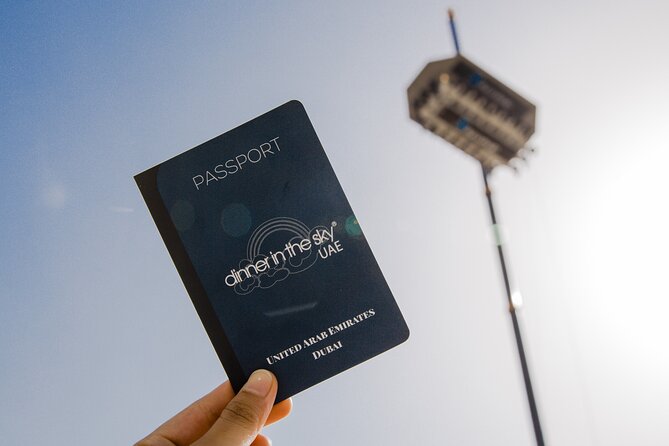
On Air Dinner Adventure in Dubai

Essaouira Delight: A Marrakech Day Escape

Sukhumvit: Hands-on Thai Cooking Class & Market Tour in BKK

Pokhara: 7-Day Annapurna Base Camp Guided Trek

From Alicante: Guided Visit to an Old Winery. Tasting Included.
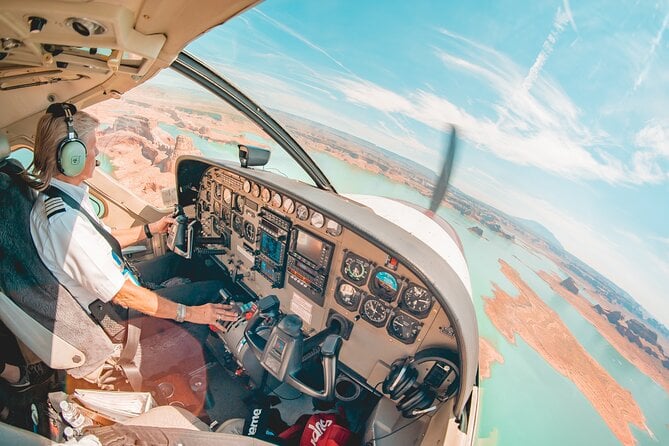
Monument Valley Air and Ground Tour From Phoenix (Mvj)
5th Moscow Boat Show, March 20-25, 2012
- Inspiration
Related News
Popular news this week, popular news this month, latest news.
- Yacht Charter & Superyacht News >
Written by Zuzana Bednarova
The 5th edition of the International exhibition of yachts and boats – Moscow Boat Show , held from March 20 to 25, 2012 will be hosted by the first pavilion of Crocus Expo International Exhibition Centre. This popular show is dedicated not only to the specialists of the market segment and professional sportsmen but also to those who consider sailing sport to be their hobby and well cherished dream.

The project is the result of joint efforts of the Crocus Expo International Exhibition Centre and the National Marine Industry Association. The event is supported by Aston Martin Moscow, Burevestnik Group logistics department and the Yachting specialized magazine. Moscow Boat Show is the largest project in Russia presenting all the best in the world of yachting.
The exhibition annually shows high level of attendance and has already proved as significant and noteworthy event in the world of yachts and boats. Every year new exhibitors join the list of participants, genuine “sharks” of yachting business, the quantity of visitors considerably increases and the exposition becomes more sated and diverse.
The best companies professionally involved into yachting and small navigation business – 180 exhibitors from 17 regions of the Russian Federation and 15 countries traditionally presented the best and the newest in the world of yachting at 2011 edition: from design and facilitation of vessels and up to cruising and training courses for beginning skippers. In 2011 the overall exhibit space comprised 18 000 sq m. More than 25 000 visitors came to the show.
This year the exposition space will increase up to 30 000 sq m and will be accommodated in 4 exhibition halls. The scale of the project confirms confident positions of its positive development. The organizers will try to arrange a genuine fiesta of water on land!
Quite a number of foreign exhibitors will participate in the show. Foreign companies show increasing interest to yachting business in Russia.
Moscow Boat Show provides the perfect platform from which to preview new products, evaluate market trends, and establish long-lasting and commercially profitable partnerships. Despite the dynamic changes taking place in Russia and the rapid growth of the yachting sector, the show continues to complement and reflect the industry’s demand and is a promotional opportunity not to be missed!
As its popularity and success rate has grown over the last years Moscow Boat Show 2012 has developed to incorporate more than just an exhibition. These special events serve to attract leading exhibitors and visitors and allow all participants the chance to broaden their knowledge and of course their sales potential.
Moscow Boat Show helps representatives of yachting business to get acquainted with their Russian colleagues and gradually improves national yachting market to a new level. It is obvious that for 4 years of its running the project has turned to a status event of the international exhibitions calendar. The organizers of the exhibition aim to bring together on the same platform all key national and worldwide players and to offer an excellent platform to encourage networking among specialists and visitors in order to accelerate the development in this field as well as implementing new technologies, the newest equipment, materials and components.
Please contact CharterWorld - the luxury yacht charter specialist - for more on superyacht news item "5th Moscow Boat Show, March 20-25, 2012".
- Charity & Fund Raising
- CharterWorld News
- Classic Yachts
- Coronavirus
- Cruise Ship
- Ecological Yachts
- Expedition Yachts
- Expert Broker Advice
- Feature Superyachts
- Interior Design
- Legal & VAT Yacht Issues
- Luxury Catamarans
- Luxury Gulet
- Luxury Phinisi
- Luxury Trimarans
- Luxury Yacht Design
- Luxury Yachts
- Marinas & Harbours
- Marine Ecology
- Marine Electronics
- Marine Equipment
- Mega Yachts
- Modern Yachts
- Motor Yachts
- New Launch Yachts
- New To Charter
- Open Style Sports Yachts
- Private Jets
- Sailing Yachts
- Social Media
- Sports Yachts
- Superyacht Crew
- Superyacht Photographers
- Superyacht Products & Supplies
- Superyacht Refits
- Superyacht Reviews
- Superyachts
- Uncategorized
- Yacht Builders
- Yacht Charter
- Yacht Charter Destinations
- Yacht Charter Picks
- Yacht Charter Specials
- Yacht Delivered to Owner
- Yacht Designers
- Yacht Events & Boat Shows
- Yacht Fashion
- Yacht Industry News
- Yacht Photos
- Yacht Racing
- Yacht Racing & Regattas
- Yacht Safety Equipment
- Yacht Support Vessels
- Yacht Tenders
- Yacht Videos
- Yachting Associations
- Yachting Awards
- Yachting Business
- Yachts For Charter
- Yachts For Sale
Quick Enquiry
Superyacht news:.
Email Your Yachting News to: news @ charterworld.com
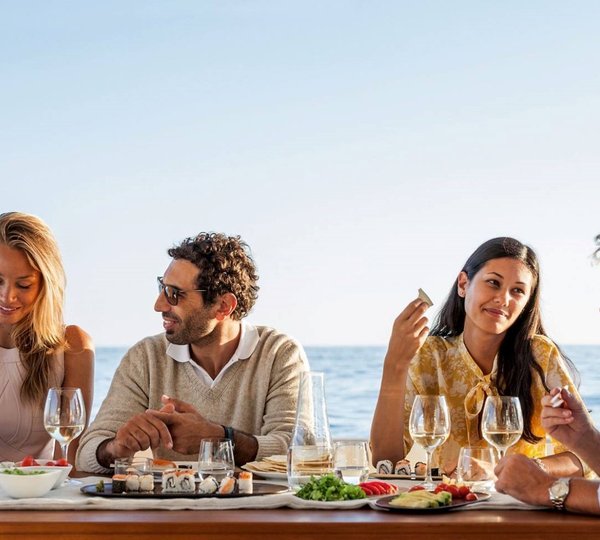
Luxury Yachts At Events
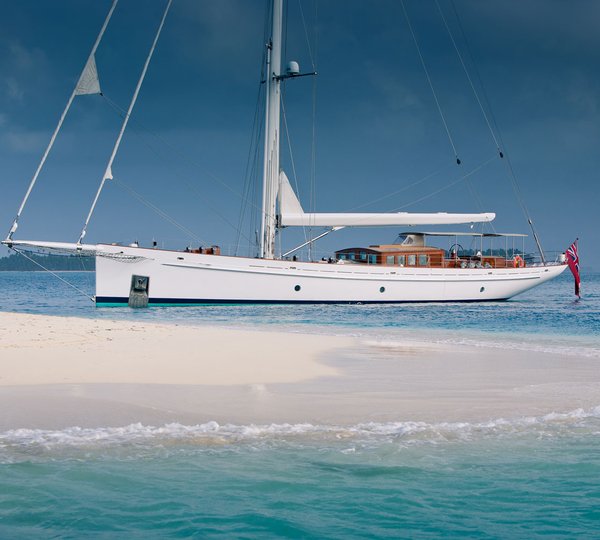
The Caribbean
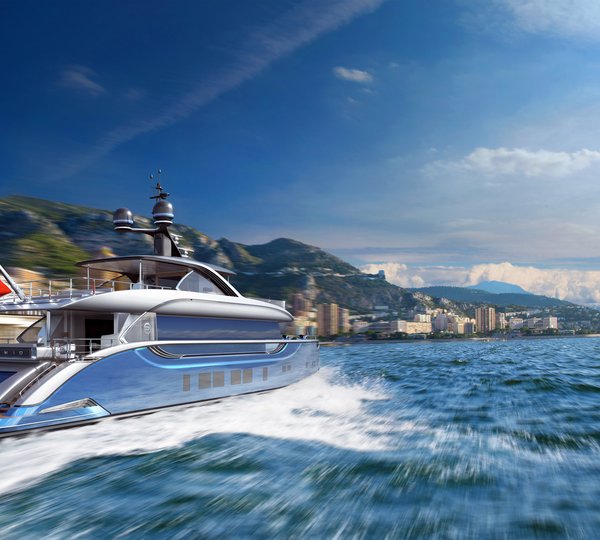
The Mediterranean
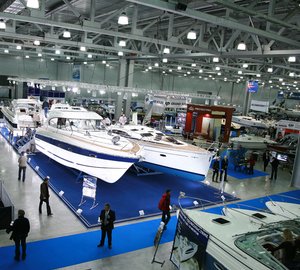
5th International exhibition of boats and yachts Moscow Boat Show a Huge Success
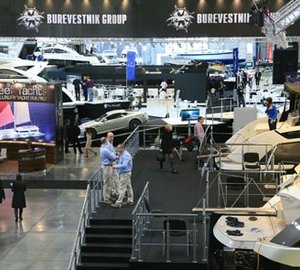
The Gala Opening Ceremony of the 5th Moscow Boat Show held on March 20
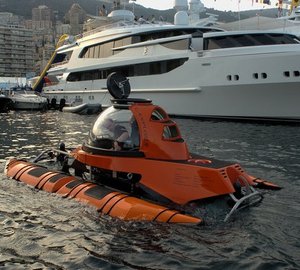
Russian debut for U-Boat superyacht submarines at Moscow Boat Show 2012
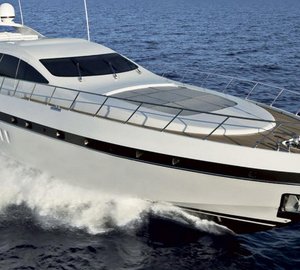
Maxi-Open Mangusta Yachts presented at Boat Shows in Palm Beach and Moscow
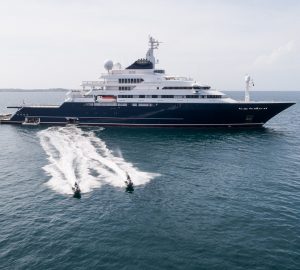
10 sensational superyachts with spectacular swimming pools
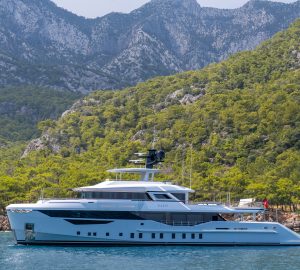
Superyacht KAŞIF on route to the 2024 Cannes and Monaco Yacht Shows
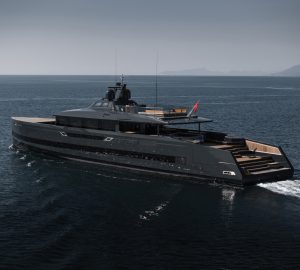
45m custom superyacht SAN will debut at the 2024 Monaco Yacht Show
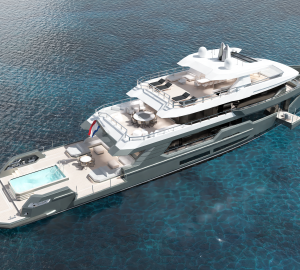
Leapher Yachts unveils 49m luxury explorer yacht NAVIX50
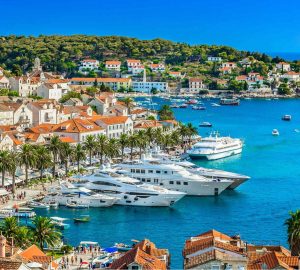
Inaugural CROYA Charter Show announced for 4th to 6th October 2024 in Split, Croatia
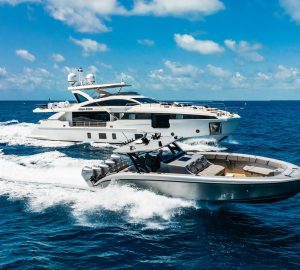
31m luxury yacht CARPE DIEM available for charter in the Bahamas

OCEA delivers 33m motor yacht ARAOK II to her new owner
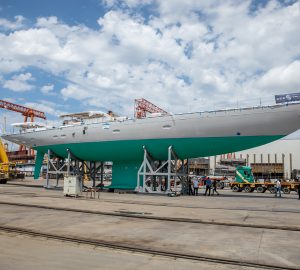
39m sailing yacht LINNEA AURORA launched by SES Yachts
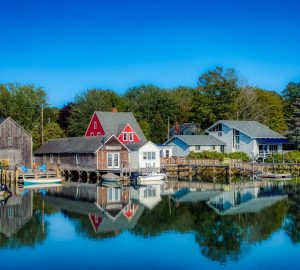
A luxury charter yacht is the perfect way to encounter New England’s fall foliage display
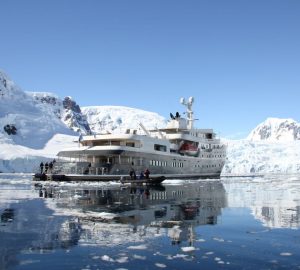
Charter yachts offering citizen science opportunities around the world
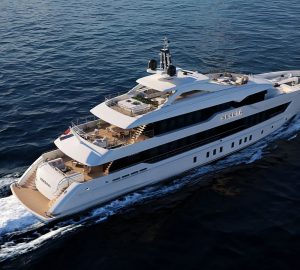
55m superyacht YN20555 is launched by Heesen Yachts and named superyacht SERENA
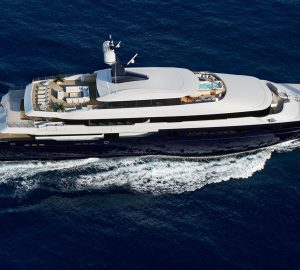
Late summer special offer on board 72m superyacht ARBEMA in the Western Mediterranean
- Collaborators
Skipper - 17m Private M/C
Looking for a Skipper for a 17m Private Motor Catamaran.
Seasonal Position to start April in Greece.
Will be cruising Greece for the Summer.
Must have YM Offshore in hand.
This a a sole crew member vessel therefore you will be required to maintain the interior and exterior.
When the owner is onboard (which is often) he drives the vessel.
Must be fluent in English.
Non smoking vessel.
Salary DOE with a standard MLC SEA.
Please apply online with A-Z Yachting or send your CV to [email protected]
2-8 TOWNHOUSE GATE, Whitstable, POOLE, BH152PW United Kingdom

IMAGES
VIDEO
COMMENTS
A-Z Yachting consistently strives for greatness by always deploying an exceptional level of experience and expertise, providing a top quality, recruitment and placement service for seagoing individuals within the industry. We have an experienced team who are available 24 hours a day, 7 days a week, to help you with any personnel requests. ...
A-Z Yachting offering crew members an opportunity to find the dream job that they are always ever so actively seeking, as well as providing fully qualified and experienced professional crew members to yacht owners. My goal is to ensure that crew members and yacht owners are confident that their objectives will always be met.
We understand that finding the perfect crew for your yacht is not just about filling positions... it's about creating a seamless & memorable experience at sea. We offer an extended warranty of 6 months for senior crew placed on permanent contracts. Get in touch and. let us know how we can help. Contact A-Z Yachting.
Deckhand - 55m+ Charter S/Y. Ref: 663. Posted: 16th Aug 2024. Looking for a Deckhand for a 55m+ Charter S/Y. Permanent position to start ASAP in Spain. Must have a minimum of 1 year experience in the industry. Dual season vessel with a busy program.
A-Z Yachting Ltd., Palma De Mallorca, Spain. 10,073 likes · 108 talking about this. MLC compliant Yacht Crew Agency Nautilus Strategic Partner
The A-Z Yachting team is here to assist you whether you are looking for yacht crew or looking for work, MLC 2006 (Maritime and Labour Convention) compliant yacht crew agency A-Z Yachting Ltd. will save you time and provide the best personal service for clients and candidates alike. Crew currently looking for work, please make sure your profile ...
A-Z Yachting LTD | 733 followers on LinkedIn. MLC Compliant Yacht Crew Agency Nautilus Strategic Partner | At A-Z Yachting we consistently strive for greatness by always deploying an exceptional level of experience and expertise in providing a top quality, source and supply service of seagoing individuals within the industry. We have an experienced team who are available 24 hours a day, 7 days ...
Salary DOE Please apply online with A-Z Yachting or send your CV to [email protected] #villajobs #exyachtcrew #villastaff #villastewardess #villachef #villastaffrecruitment. Looking for a Chief Stewardess for a 45m+ Private M/Y. -CANDIDATES MUST BE LEGAL TO WORK IN THE USA! -Permanent position with start date TBD.
A-Z Yachting is expanding and is looking for Full Time Remote Recruitment Consultant!. Can be located anywhere in the world but must have extensive experience in the yachting industry and experience as a recruitment consultant!. Must be a self-motivated, goal-orientated individual who is fluent in English.
In this A-Z of yachting terms, we'll briefly explain yacht terms, parts, equipment, sailing commands, and even some pirate jargon. For you to understand the ins and outs of a boat you should know where it starts and where it ends. The front of a boat is known as the bow while the back is called the stern.
Flaking a sail is the process of folding the sail back and forth upon itself like the blades on a paper fan. Flaking a sail will help prolong the sail life. Foot (Sail): The foot of a sail is the lower part of the sail. In the case of a mainsail, this is the part of the sail that runs along the boom.
Non smoking vessel. Must be fluent in English. Only candidates located in the EU/UK will be considered! Salary DOE with a standard MLC SEA. Please apply online with A-Z Yachting or send your CV to [email protected]. Solo Chef. 656. Looking for a Sole Chef for a 40m+ Private M/Y. TEMP position for the month of September (can become rotational ...
Ve el perfil profesional de A-Z Yachting en LinkedIn. LinkedIn es la red de negocios más grande del mundo que ayuda a profesionales como A-Z Yachting a encontrar contactos internos para recomendar candidatos a un empleo, expertos de un sector y socios comerciales.
A-Z Yachting Ltd. 5.0. Based on 45 reviews. powered by Facebook. review us on. Georgie Joubert. a month ago. I worked with Leah from A-z, she was very attentive to what I was looking for and managed to place me on a boat. I could not be happier with the position; I 100% recommend signing up and getting in touch.
Y. Yachtie - A term used to refer to someone who works on a yacht. This includes crew members such as the captain, first mate, deckhands, steward (ess), chef, and engineers. Being a yachtie is not just a job, but a lifestyle that requires a unique set of skills and knowledge.
Unique exhibits were presented at the show for the first time: exposition of private submarines from U-Boat Russia company, Marquis Yachts 420 SB motor yacht from Sport Bridge S. Marine series, SAGA-415 yacht from Saga Boats Norwegian shipyard, Jetlev-Flyer from MS Watersports.
Reuters. FILE PHOTO: Rescue personnel operate in search for the missing, including British entrepreneur Mike Lynch, in the area where a luxury yacht sank off the coast of Porticello, near the ...
Overview and Pricing. The Azimut 80 Yacht Charter in La Paz offers a luxurious yachting experience, starting at $4,060.00 per person for an 8-hour journey.. This all-inclusive package provides guests with the freedom to explore the stunning landscapes of La Paz and the Sea of Cortez.. The charter boasts a free cancellation policy, allowing guests to cancel up to 24 hours in advance for a full ...
The 5th edition of the International exhibition of yachts and boats - Moscow Boat Show, held from March 20 to 25, 2012 will be hosted by the first pavilion of Crocus Expo International Exhibition Centre.This popular show is dedicated not only to the specialists of the market segment and professional sportsmen but also to those who consider sailing sport to be their hobby and well cherished ...
Zsofia +44(0) 7861 818 118 Holly +44(0) 7500 119 797 Leah + 44(0) 7818 863 172 Francesca +44(0) 7789 070 416 Christy +44(0) 7789 070 416
A-Z Yachting is expanding and is looking for Full Time Remote Recruitment Consultant! Can be located anywhere in the world but must have extensive experience in the yachting industry. Experience with recruitment is a BIG BONUS! Must be a self motivated, goal orientated individual that is fluent in English.
The yacht carried 18,000 liters of fuel, posing a significant risk to the waters near Palermo. Bids for the salvage operation, funded by a company owned by Lynch's wife, Angela Bacares, have ...
Please apply online with A-Z Yachting or send your CV to [email protected] . LinkedIn Facebook X. Deck 573 LinkedIn Facebook X. Deck 573 Apply. Contact Us. 2-8 TOWNHOUSE GATE, Whitstable, POOLE, BH152PW United Kingdom. [email protected]. GDPR Candidate Agreement | ...
Vnukovo. Vnukovo District is an administrative district of Western Administrative Okrug, and one of the 125 raions of Moscow, Russia. Most of the district is occupied by Vnukovo International Airport, a small adjacent residential area, and a separate residential micro-district. Photo: Ssr, CC BY-SA 3.0. Ukraine is facing shortages in its brave ...
A-Z Yachting Yacht Crew Agency Close. Search for: Search. Find a Job; Find Crew; About Us; Collaborators; Reviews; Contact; Log In; Menu. Get in touch and let us know how we can help. Contact A-Z Yachting. Zsofia +44(0) 7861 818 118 Holly +44(0) 7500 119 797 Leah + 44(0) 7818 863 172 Francesca +44(0) 7789 070 416
Vnukovo, formally Vnukovo Andrei Tupolev International Airport, is a dual-runway international airport located in Vnukovo District, 28 km southwest of the centre of Moscow, Russia.